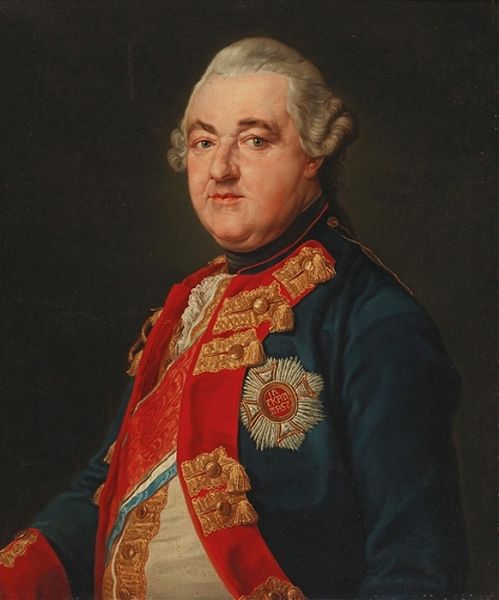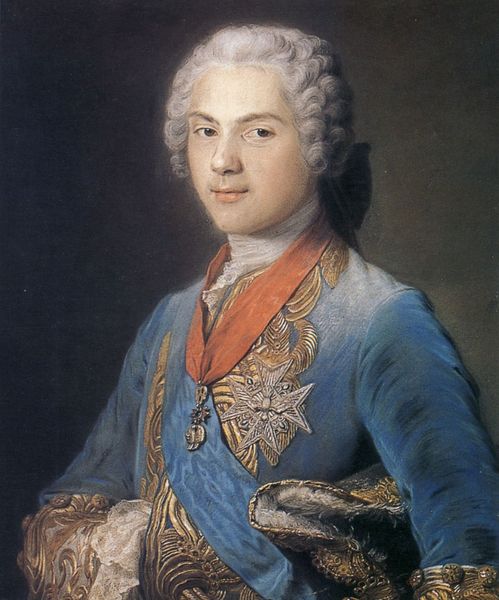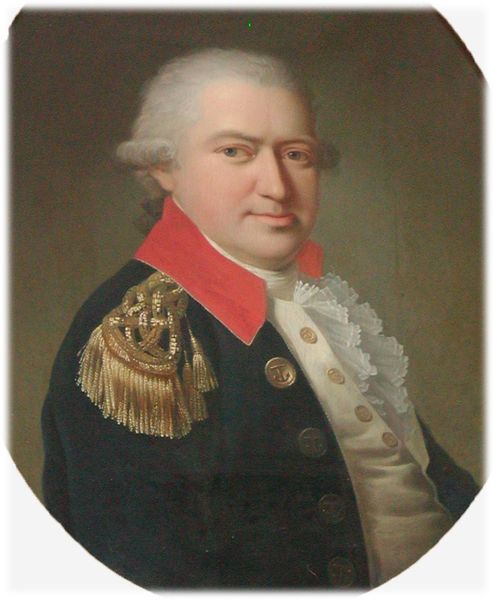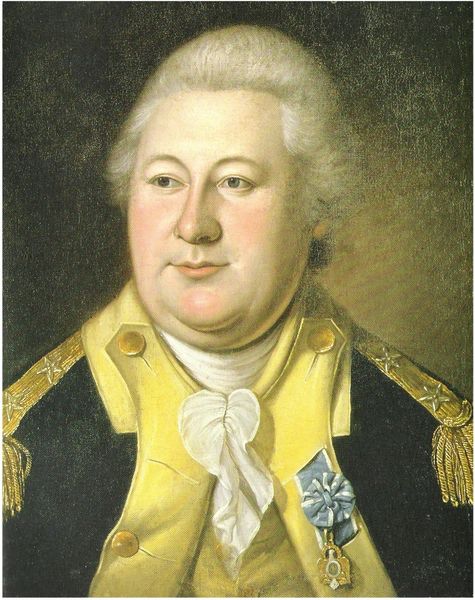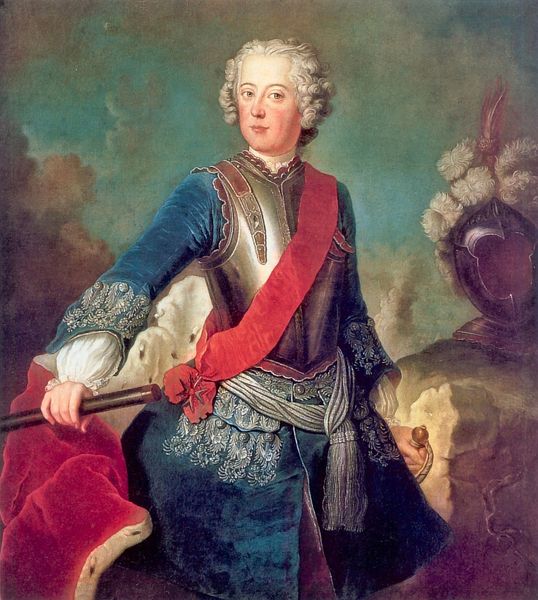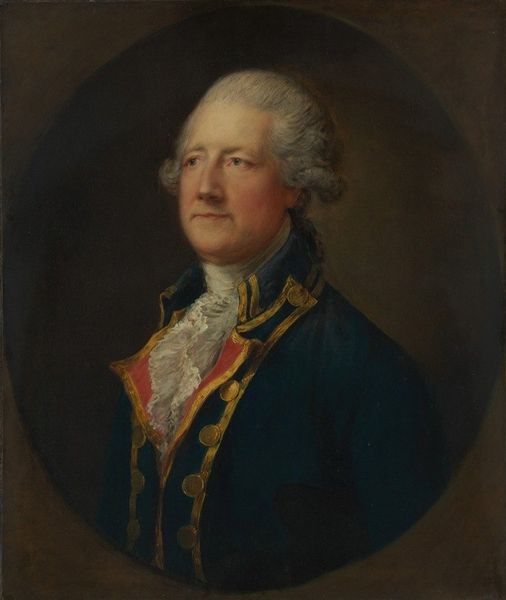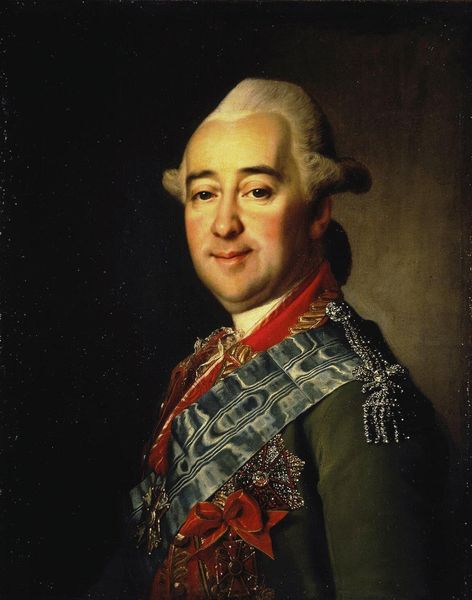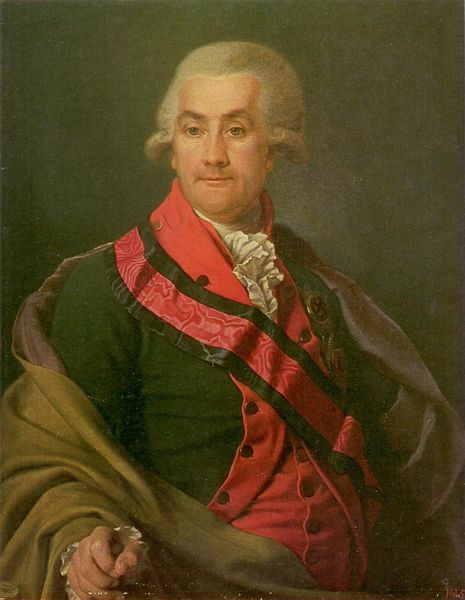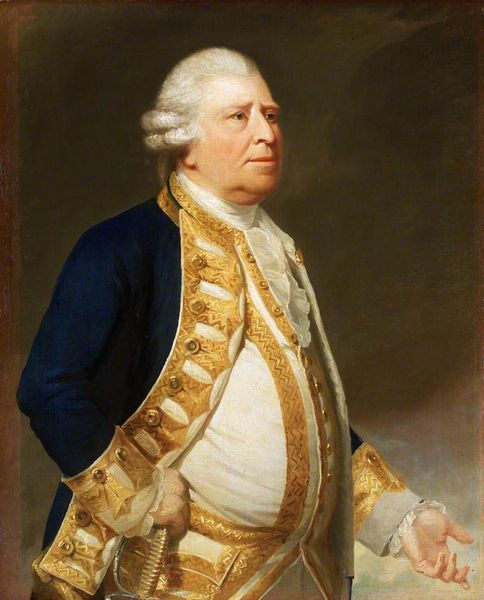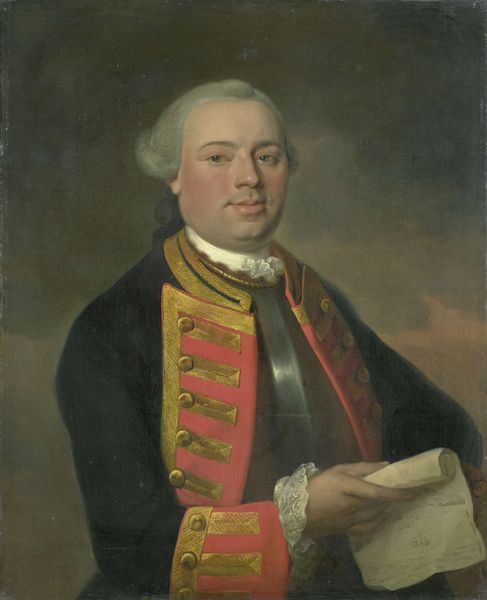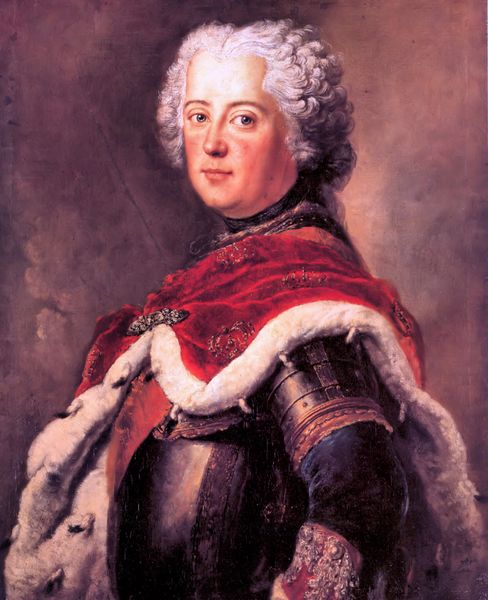
Dimensions: 76 x 63 cm
Copyright: Public domain
Curator: This is "Admiral Sir Edward Hughes," painted in 1786 by Joshua Reynolds. It’s an oil painting held at the Budapest Museum of Fine Arts. Editor: What strikes me first is the lavishness—look at the quality of his uniform, those gleaming fabrics! This portrait reeks of wealth and power. Curator: Reynolds was masterful at conveying status through symbolism. Notice the oval frame – historically linked with authority and permanence, as if enshrining Hughes’s legacy. His gaze meets ours directly, asserting dominance, while his powdered wig references the social custom and culture of that time. Editor: Yes, but I’m also thinking about what it would take to create this effect. Reynolds was famous for his studio setup, carefully crafting light and texture. Imagine the cost of the pigments and canvas, the time spent on each brushstroke. His artistry clearly depended on both Hughes’s money and Reynolds’ access to those resources. Curator: Absolutely. It's a perfect example of the Baroque style and its tendency to depict individuals with a commanding presence within a grand narrative. It’s as much about capturing individual likeness as it is about projecting the image of a powerful leader for posterity. Editor: And also, let’s consider how someone like Hughes would literally "consume" the image. This was not simply about recording his appearance, but staging him for social, political, and possibly even dynastic, purposes. It highlights a certain type of social relationship, and how objects of display cemented those relations. Curator: I see your point. These portraits reinforce power dynamics that have resonated through history. Editor: Indeed. When looking at Reynolds’ work here, what comes across isn’t so much Hughes the person but the elaborate web of social relations necessary to materialize his persona. Curator: Reflecting on how Reynolds uses visual language of authority in this specific material way is pretty fascinating. Editor: I agree; investigating the resources necessary for the painting allows us to understand those relationships. It has given me so much more to think about with portraiture from this period.
Comments
No comments
Be the first to comment and join the conversation on the ultimate creative platform.
